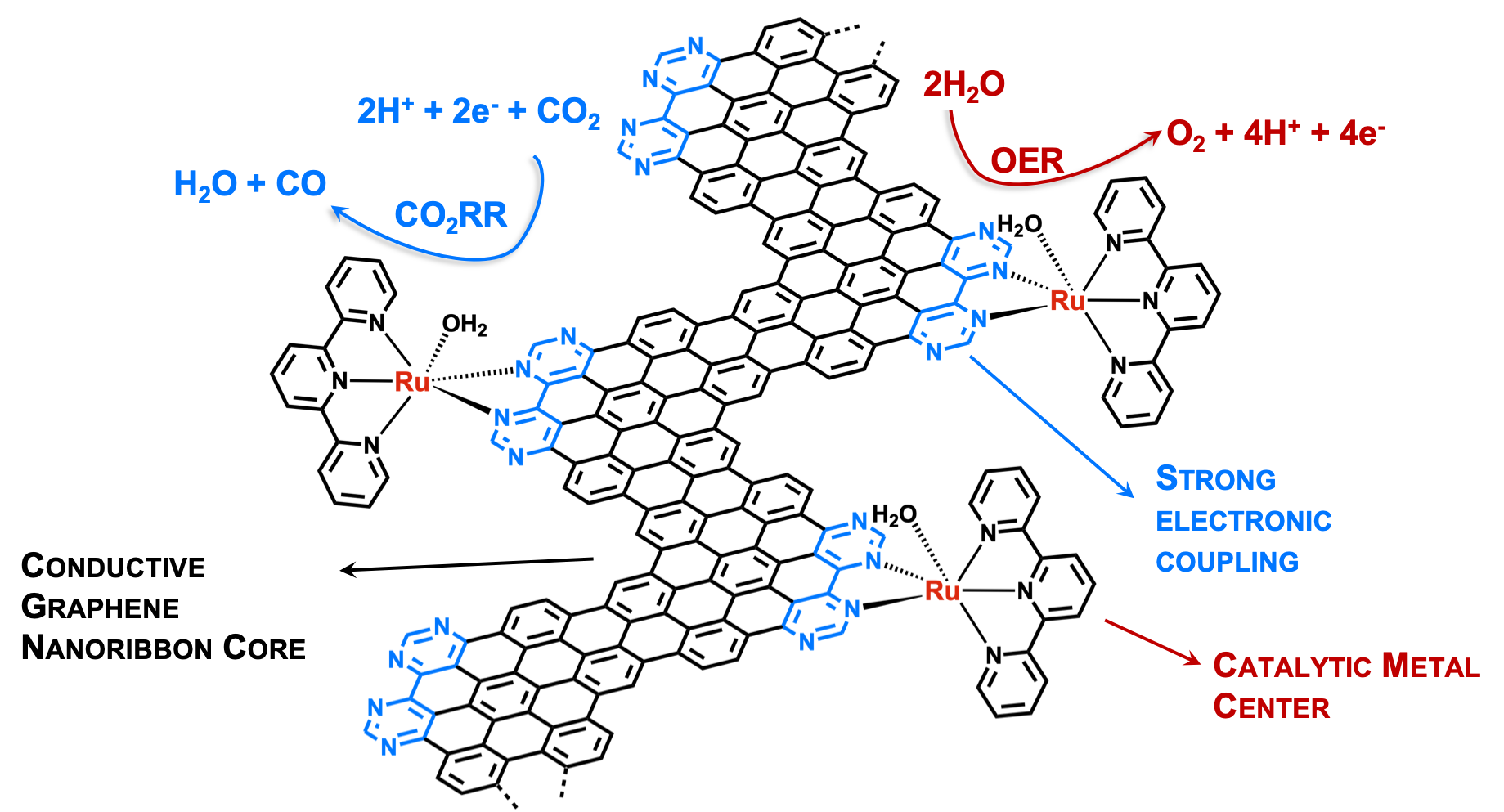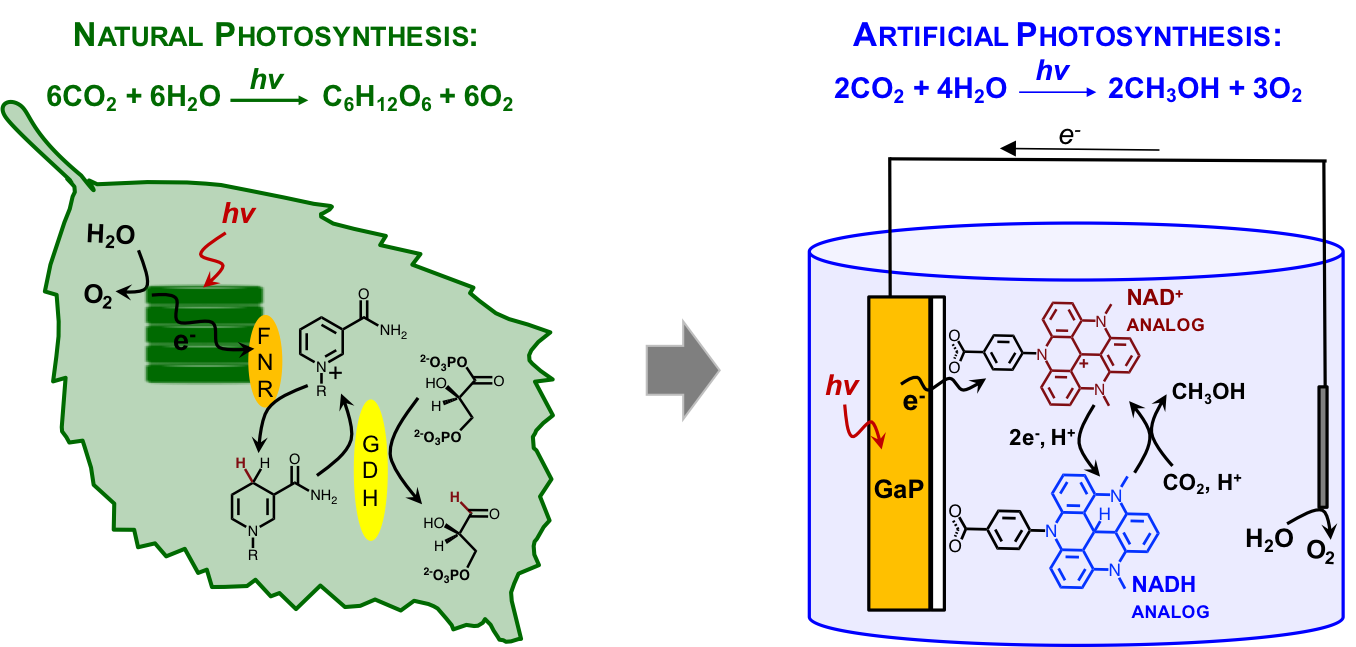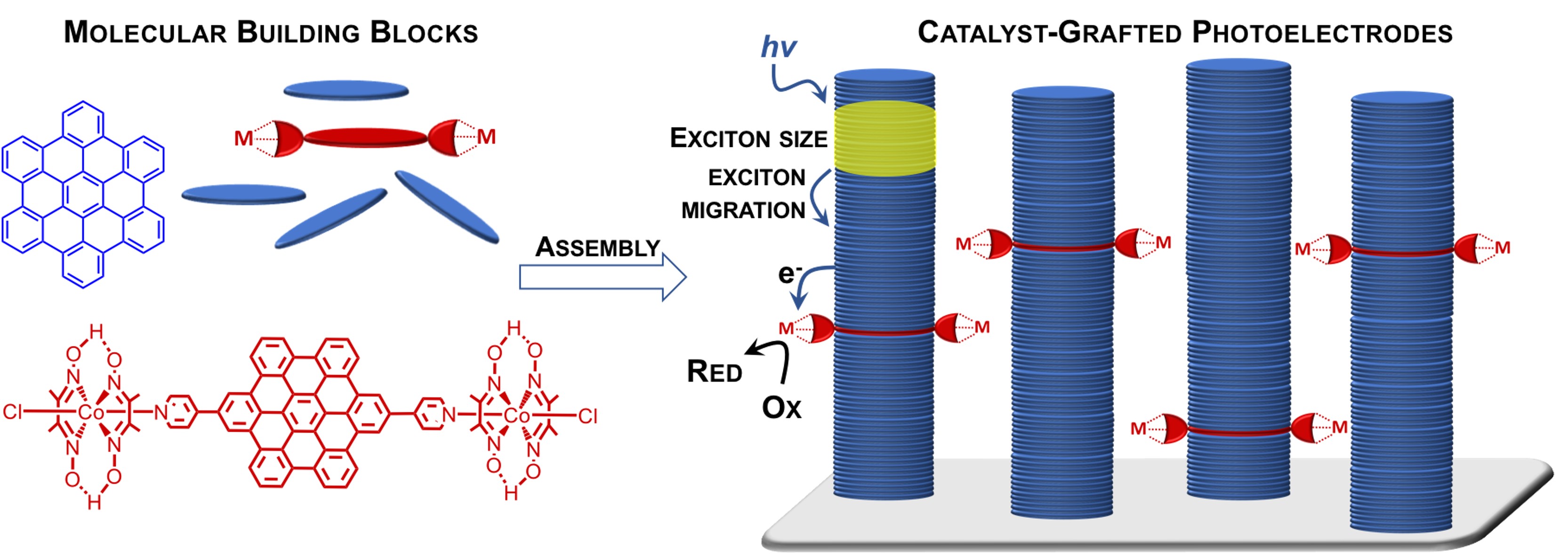Our group investigates photo- and electro-catalytic processes that are relevant to solar fuels and other energy storage applications. We work at the interface between organic and physical chemistry and we accordingly use techniques common to both of these fields: (i) syntheses of model compounds; (ii) electrochemical studies using cyclic voltammetry, bulk electrolysis and spectroelectrochemistry; (iii) time-resolved femtosecond pump-probe studies of photochemical processes (our instrument has the capacity to probe in both the visible and mid-IR range). In specific, three projects are studied in our labs:
Catalyst-grafted Graphene Nanoribbons: In this project, we investigate electrochemical transformations that are catalyzed by a novel type of catalysts composed of conductive graphene nanoribbon platforms and chemically tunable transition metal centers. We are interested in evaluating the factors that control the charge transport through the carbon network and the effect of large conjugated ligand on the catalytic performance of transition metals. Our fundamental studies aim to identify the motifs for future graphene-based electrode materials for batteries, fuel cells and photoelectrochemical cells.

Photocatalytic CO2 Reduction by Biomimetic NADH-Analogs: In this bio-inspired approach, we investigate metal-free hydride donors that can reduce CO2 to methanol. The closure of catalytic cycle and the recovery of hydrides is achieved photochemically, using semiconductor photocathodes as light absorbers. The factors that affect the interfacial charge transfer kinetics are studied using time-resolved laser spectroscopy. The thermodyanmic hydricities of model hydride donors and their reactivity towards CO2 is studied using time-resolved methods. This work is relevant for solar fuel cell applications.

Light Harvesting by Graphene Quantum Dot Assemblies: This project involves a study of graphene quantum dot (GQD) assemblies as light harvesting elements, with potential applications for solar fuel production. The absorption frequency can be tuned by varying the GQD size, while the catalyst for solar fuel forming processes can be attached to the edges. The aim of this project is to use ultrafast laser spectroscopy to investigate the factors that control the exciton size and migration in GQDs, as well as rates of photoinduced charge separation at the catalytic sites.

